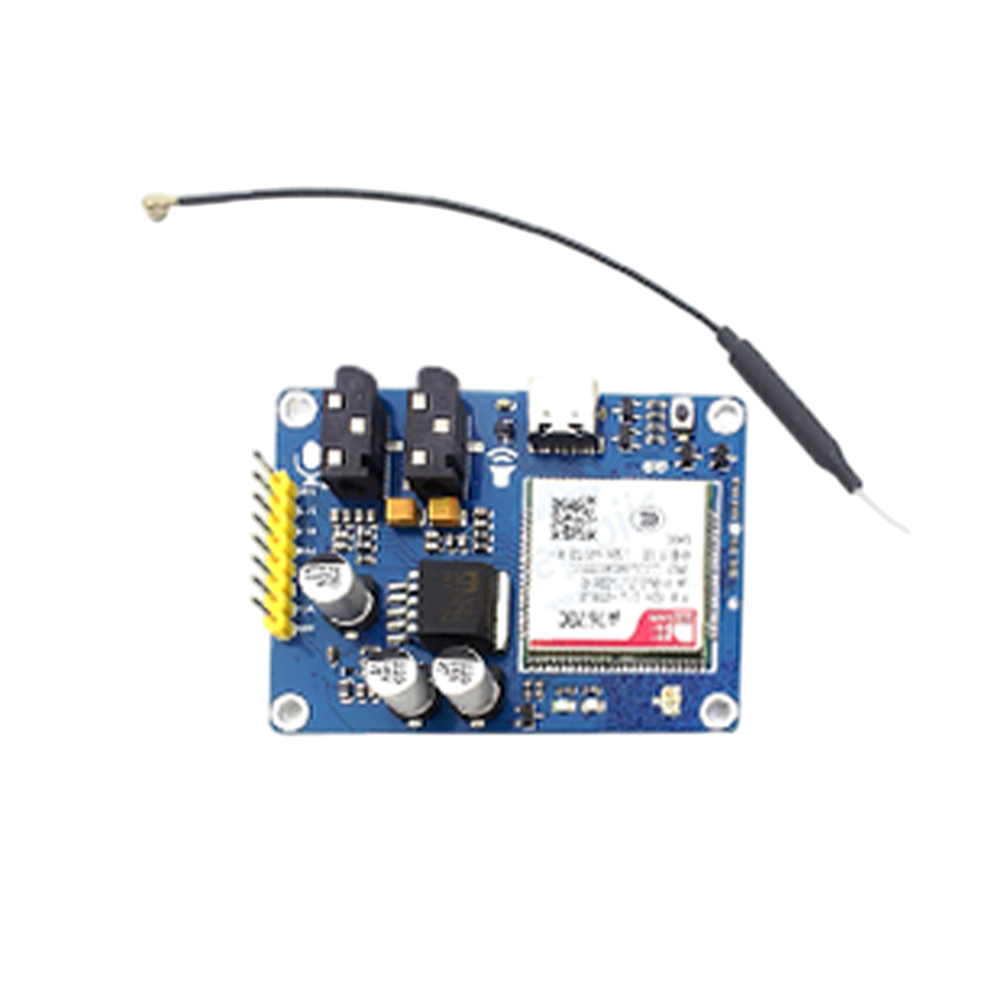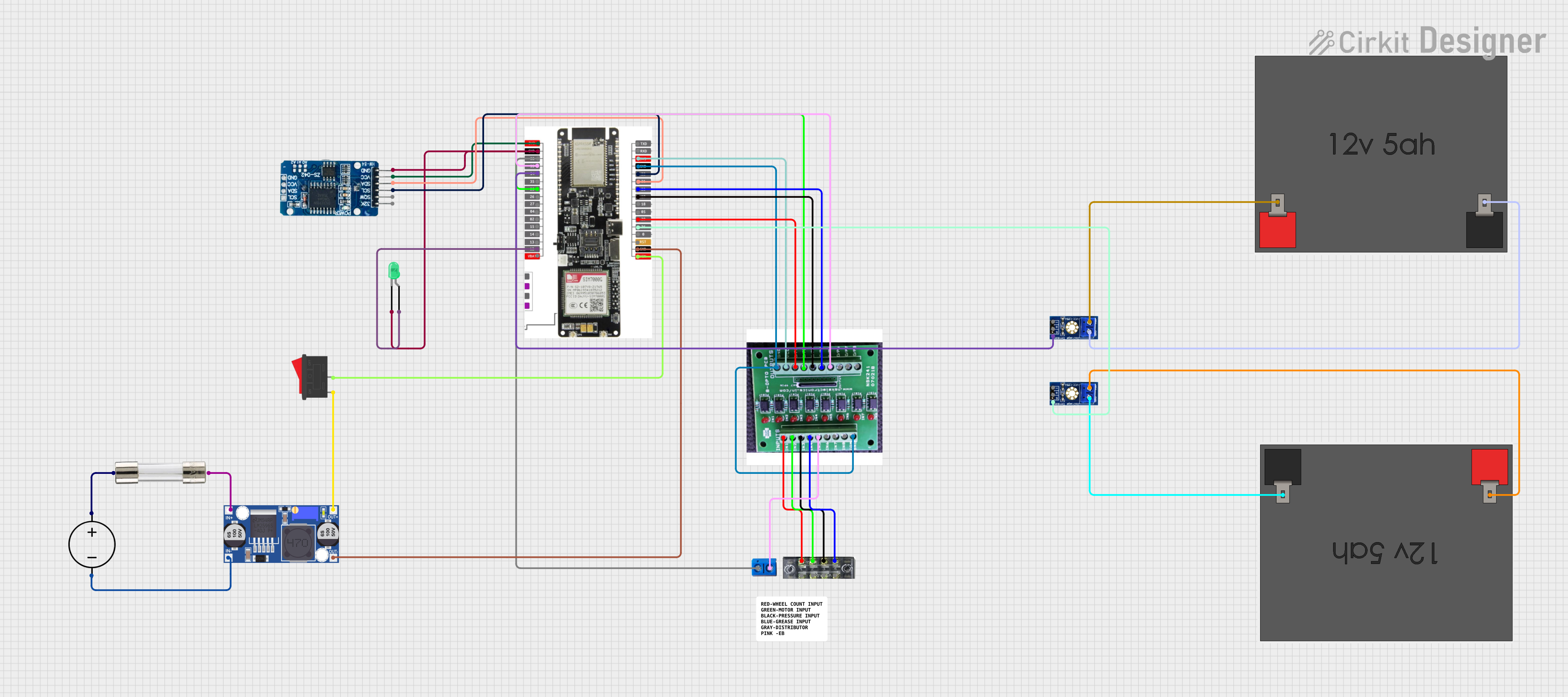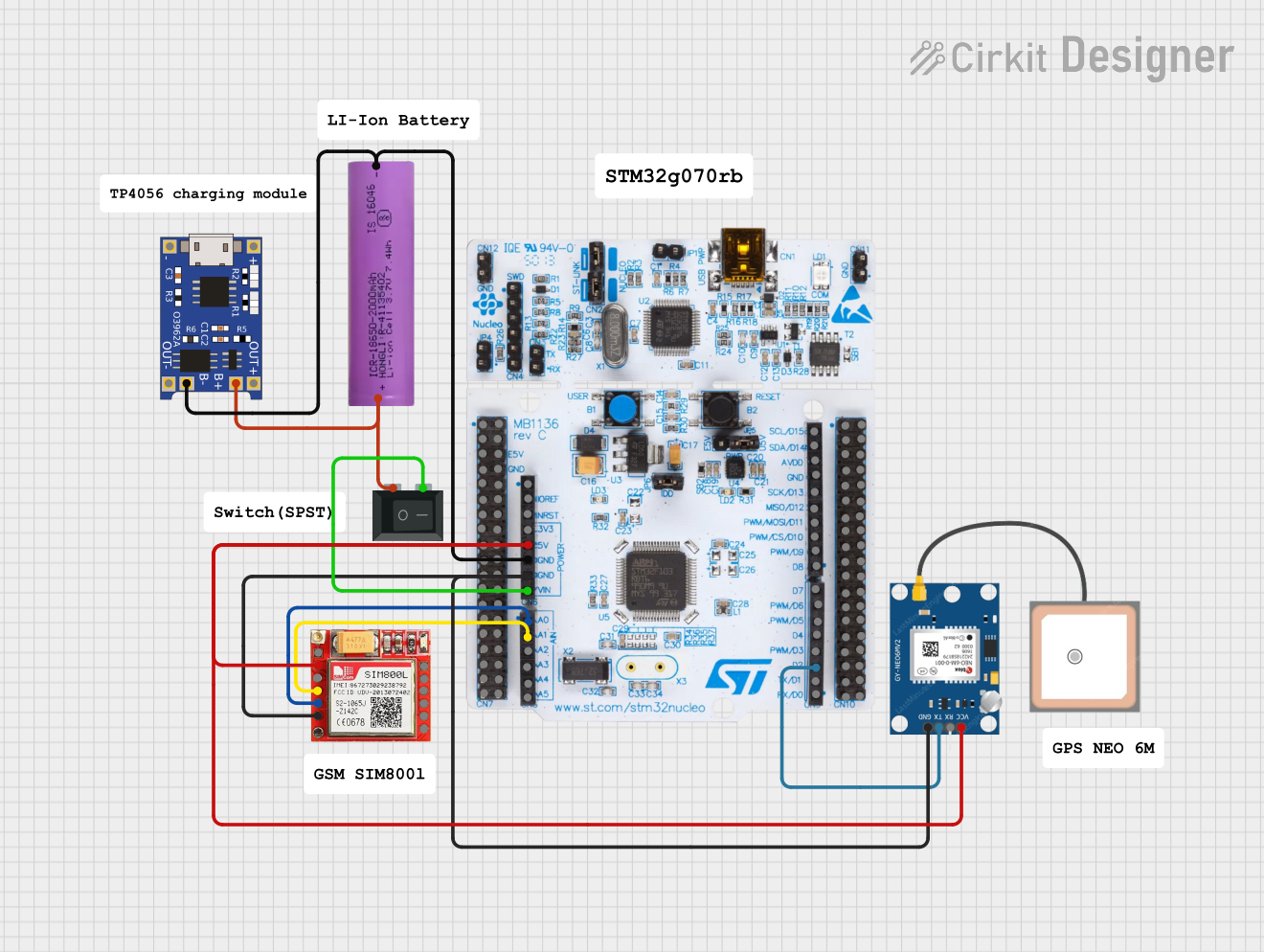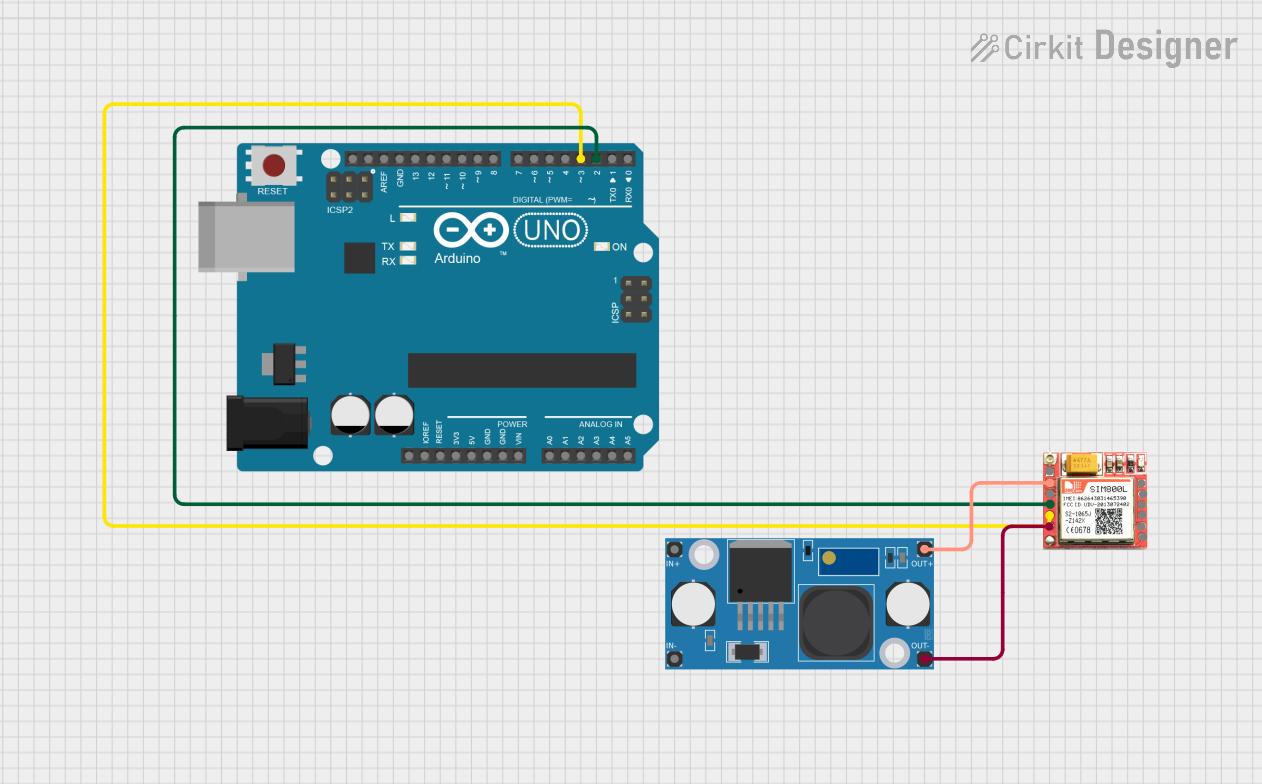
How to Use sim a7670c r2 4g lte cat 1 module: Examples, Pinouts, and Specs

 Design with sim a7670c r2 4g lte cat 1 module in Cirkit Designer
Design with sim a7670c r2 4g lte cat 1 module in Cirkit DesignerIntroduction
The SIM A7670C R2 is a compact 4G LTE module manufactured by SIMCom, designed specifically for IoT (Internet of Things) applications. It supports Category 1 (Cat 1) data rates, making it ideal for applications requiring efficient communication and low power consumption. This module is well-suited for smart metering, asset tracking, industrial automation, and other IoT use cases where reliable connectivity is essential.
Explore Projects Built with sim a7670c r2 4g lte cat 1 module

 Open Project in Cirkit Designer
Open Project in Cirkit Designer
 Open Project in Cirkit Designer
Open Project in Cirkit Designer
 Open Project in Cirkit Designer
Open Project in Cirkit Designer
 Open Project in Cirkit Designer
Open Project in Cirkit DesignerExplore Projects Built with sim a7670c r2 4g lte cat 1 module

 Open Project in Cirkit Designer
Open Project in Cirkit Designer
 Open Project in Cirkit Designer
Open Project in Cirkit Designer
 Open Project in Cirkit Designer
Open Project in Cirkit Designer
 Open Project in Cirkit Designer
Open Project in Cirkit DesignerCommon Applications
- Smart metering (electricity, water, gas)
- Asset tracking and fleet management
- Industrial automation and control systems
- Smart home and security systems
- Wearable devices and health monitoring
- Point-of-Sale (POS) terminals
Technical Specifications
Key Technical Details
| Parameter | Specification |
|---|---|
| Manufacturer | SIMCom |
| Part Number | SIM A7670C |
| Network Support | 4G LTE Cat 1, GSM/GPRS/EDGE fallback |
| Frequency Bands | LTE: B1/B3/B5/B7/B8/B20/B28 |
| Data Rate (LTE Cat 1) | Uplink: 5 Mbps, Downlink: 10 Mbps |
| Operating Voltage | 3.3V to 4.3V (Typical: 3.8V) |
| Power Consumption | Idle: ~1.2mA, Active: ~500mA |
| Operating Temperature | -40°C to +85°C |
| Dimensions | 24mm x 24mm x 2.4mm |
| Interface Support | UART, USB 2.0, GPIO, I2C, SPI |
| SIM Card Support | 1.8V/3.0V |
| GNSS Support | GPS, GLONASS, BeiDou, Galileo |
| Firmware Update | FOTA (Firmware Over-The-Air) |
Pin Configuration and Descriptions
The SIM A7670C module has a total of 42 pins. Below is a summary of the key pins:
| Pin Number | Pin Name | Description |
|---|---|---|
| 1 | VCC | Power supply input (3.3V to 4.3V) |
| 2 | GND | Ground |
| 3 | TXD | UART Transmit Data |
| 4 | RXD | UART Receive Data |
| 5 | USB_DP | USB Data Positive |
| 6 | USB_DM | USB Data Negative |
| 7 | SIM_VDD | SIM card power supply |
| 8 | SIM_CLK | SIM card clock |
| 9 | SIM_DATA | SIM card data |
| 10 | SIM_RST | SIM card reset |
| 11 | GPIO1 | General Purpose I/O |
| 12 | GPIO2 | General Purpose I/O |
| 13 | GNSS_TXD | GNSS UART Transmit Data |
| 14 | GNSS_RXD | GNSS UART Receive Data |
| 15 | RESET | Module reset (active low) |
For a complete pinout, refer to the official SIMCom datasheet.
Usage Instructions
How to Use the SIM A7670C in a Circuit
- Power Supply: Connect the module's
VCCpin to a stable power source (3.8V typical) andGNDto ground. Ensure the power supply can handle peak currents of up to 2A. - UART Communication: Connect the
TXDandRXDpins to a microcontroller or host device for serial communication. Use a level shifter if the host operates at 5V logic levels. - SIM Card Interface: Connect a 1.8V or 3.0V SIM card to the
SIM_VDD,SIM_CLK,SIM_DATA, andSIM_RSTpins. - Antenna Connection: Attach a 4G LTE antenna to the module's antenna connector for optimal signal reception.
- GNSS Functionality: If GNSS is required, connect the
GNSS_TXDandGNSS_RXDpins to the host device and attach a GNSS antenna.
Important Considerations
- Power Supply Stability: Use decoupling capacitors (e.g., 100µF and 0.1µF) near the
VCCpin to ensure stable operation. - Antenna Placement: Place the antenna away from noise sources and ensure proper grounding for optimal performance.
- Reset Pin: Use the
RESETpin to restart the module if it becomes unresponsive. - Firmware Updates: Regularly update the module's firmware via FOTA to ensure compatibility and security.
Example: Connecting to an Arduino UNO
Below is an example of how to connect the SIM A7670C to an Arduino UNO and send an AT command to check network registration.
Wiring
| SIM A7670C Pin | Arduino UNO Pin |
|---|---|
| VCC | 3.3V (external supply recommended) |
| GND | GND |
| TXD | Pin 10 (RX) |
| RXD | Pin 11 (TX) |
| RESET | Pin 9 |
Code Example
#include <SoftwareSerial.h>
// Define software serial pins for communication with SIM A7670C
SoftwareSerial simModule(10, 11); // RX = Pin 10, TX = Pin 11
void setup() {
// Initialize serial communication
Serial.begin(9600); // For debugging with PC
simModule.begin(9600); // For communication with SIM A7670C
// Send a reset signal to the module
pinMode(9, OUTPUT);
digitalWrite(9, LOW); // Pull RESET pin low
delay(100); // Wait for 100ms
digitalWrite(9, HIGH); // Release RESET pin
Serial.println("Initializing SIM A7670C...");
delay(2000); // Wait for the module to initialize
// Send an AT command to check network registration
simModule.println("AT+CREG?");
}
void loop() {
// Read and display responses from the module
if (simModule.available()) {
String response = simModule.readString();
Serial.println("SIM A7670C Response: " + response);
}
}
Notes
- Ensure the Arduino's 3.3V pin is not overloaded. Use an external power supply for the module if necessary.
- Use a logic level shifter if the Arduino operates at 5V logic levels.
Troubleshooting and FAQs
Common Issues and Solutions
Module Not Powering On
- Ensure the power supply provides a stable voltage (3.8V typical) and sufficient current (up to 2A).
- Check the connections to the
VCCandGNDpins.
No Response to AT Commands
- Verify the UART connections (
TXDandRXD) and ensure the baud rate matches (default: 9600). - Check if the module is properly initialized and powered on.
- Verify the UART connections (
SIM Card Not Detected
- Ensure the SIM card is inserted correctly and supports 1.8V or 3.0V operation.
- Check the connections to the SIM interface pins (
SIM_VDD,SIM_CLK,SIM_DATA,SIM_RST).
Poor Signal Reception
- Verify the antenna is securely connected and placed in an area with good network coverage.
- Avoid placing the module near sources of electromagnetic interference.
FAQs
Q: Can the SIM A7670C operate on 2G networks?
A: Yes, the module supports GSM/GPRS/EDGE as a fallback for areas without 4G LTE coverage.
Q: How do I update the firmware?
A: Use the FOTA (Firmware Over-The-Air) feature or contact SIMCom for firmware update tools and instructions.
Q: What is the maximum data rate supported?
A: The module supports up to 10 Mbps downlink and 5 Mbps uplink on LTE Cat 1 networks.
Q: Does the module support GNSS?
A: Yes, the SIM A7670C supports GPS, GLONASS, BeiDou, and Galileo for positioning and navigation.
For further assistance, refer to the official SIMCom documentation or contact technical support.